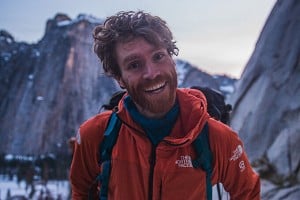
On 3rd June, Alex Honnold stunned the climbing and non-climbing world alike into awed silence with his free-solo ascent of Freerider 5.12d on El Capitan, Yosemite. An inevitable media frenzy akin to that generated by the Dawn Wall followed - and rightly so. Equipped only with shoes and a chalkbag, he calmly ascended the 3,000ft granite monolith in just 3 hours and 56 minutes. Alex's achievement has since been lauded as one of the most significant ascents in the history of climbing.
To contextualise a free-solo climb of 'El Cap' historically may be relatively easy, but finding the words to explain precisely how Alex pulled off such an unprecedented feat is beyond the ability of most climbers. We asked Pete Whittaker - who recently became the first person to rope-solo Freerider in a day - to give it a shot and he duly attempted to rationalise Alex's solo in this UKC article:
'I thought it would be a good challenge to try and wrap my head around the achievement. Whether it's right or wrong is not so important, it's more the act of trying to rationalise the irrational. Alex might read this and think 'What a load of crap, complete nonsense!' I've rope-soloed Freerider, free-soloed sections of El Cap but would never contemplate free-soloing the whole lot, so only Alex will have the true answer!'
When not answering questions for mainstream media outlets, on expedition in Alaska or being interviewed live on Jimmy Kimmel's sofa and meeting rapper 50 Cent, Alex kindly took the time to shed some light on the finer details of his solo climb.
'Who knows if anyone will get inspired to repeat it soon. Pete Whittaker could probably do it.'
Challenge accepted, Pete? ;)
This was a long-term goal for you and just the tip of an iceberg in terms of the preparation that came before the ascent. According to Tommy Caldwell, you had previously claimed that a free-solo of Freerider would be too difficult at that point in time. What was your strategy for making it become a possibility?
It wasn't always a conscious strategy - for years I just thought about the idea and slowly let it blossom in my mind. It took a long time to even think it was possible and then once I thought it was possible it took a year and a half of physical preparation to feel comfortable doing it. That time was mostly spent memorizing sequences and sorting out alternate beta and getting fit. Basically, it took quite a bit of time.
You previously tried a free-solo of the route but retreated due it not feeling right. What exactly wasn't right about it?
I'd sprained my ankle pretty severely earlier that season and it was the first time I'd been able to wear my performance-sized shoe again - basically my foot was still a bit swollen and didn't feel right. I didn't quite know the climbing well enough, either. There was still a sliver of doubt in my mind.
But it was the end of the season and the snow was coming, I felt like I should at least give it a try.
There are multiple elements of free-soloing a big wall - the physical, mental and tactical amongst others. What was the hardest part of the climb? Some might suggest simply pulling onto the wall!
Yeah, I'd been quoted in the past saying that the hardest part would be walking to the base. I think the mental side is probably the hardest - believing that it was possible. Anyone can train for the physical side - just climb the route enough times and memorize the sequences. But the mental side takes a bigger leap.
How did you deal with climbers already on the wall? I assume they were unaware of what you were attempting, before it would become obvious. You were so focused that you didn't notice a guy in a unicorn suit!
I knew there was no one up high on the route where it truly mattered, which was nice. I prefer not to see anyone when I'm soloing something like that, but it's not really that hard to walk past people on ledges. I passed 8 people on the route, but it didn't really change anything.
And no, they didn't know anything about the solo. Though I'm sure it was obvious when I walked by...
You had clearly prepared well physically, but did the solo ascent feel any harder than anticipated, what with there being less opportunity to hang and rest at belay stances?
No, if anything it felt easier. Part of what makes multi-pitches hard is the amount of time spent on the wall. You start to get hungry and dehydrated and just tired from being in a harness all day. I soloed Freerider much faster than I expected and it felt like a cascading success - I climbed fast so it was still nice and cool, which made me faster, which meant I never got hungry, which meant I never had to stop, which kept it cool, etc. It all went perfectly.
What was your first thought when you pulled over the edge/scrambled to the top?
I was stoked out of my mind. I felt amazing. I'd already started the mental celebrations a few pitches earlier - the whole last 500ft felt like a victory lap. But there was no specific thought. Just overwhelming happiness.
You deliberately didn't tell many people about your plans. Was this another way of trying to control external influences? Did you tell those closest to you the exact day you would be trying it, or not? How do you deal with the concerns of those closest to you?
Yes, by not telling anyone about the potential solo I was trying to minimize any kind of pressure. I didn't even really give a specific date to my closest friends. Honestly there wasn't really a specific date set until the day before. I knew that I was ready, but I needed a few things to line up in order to actually go for it [weather, rest, skin, etc].
Ueli Steck was another high profile solo athlete, albeit in a different discipline of climbing. Did his death affect your approach to this project, coming so close to when you were feeling ready? (30th April, UKC news)
I did think about Ueli a lot. He was a friend and a big inspiration and I was shocked by his death. I thought about him a lot, but ultimately it didn't really affect my preparation. Either way I knew what the consequences of failure were.
Some people online are critical or sceptical of National Geographic's involvement in your climb. Can you explain the relationship there?
Jimmy Chin and his wife Chai Vasarheyli had approached me about doing a feature documentary about my climbing the year before. It was a tremendous opportunity for me as a professional climber and I agreed to work with them. The only objective I ever really cared enough about to warrant a full feature film was El Cap and I figured I could use the film process to help make it happen. The beauty of working on a film is that none of my sponsors really asked much of me for the last year and a half since I already had a big project going on. It gave me the time and space to work on El Cap. I think the movie is going to be amazing, and whether people are critical or not I hope that they'll watch it.
It's El Cap! On a big screen!
Are you looking forward to the film, or will it feel a bit surreal?
It probably will feel a bit surreal, especially since I've seen none of the footage and have no say in the editing process. I have no idea what kind of movie they'll wind up making, but I'm looking forward to it. I think El Cap is the most beautiful wall in the world and it's been beautifully shot - I think they'll really do justice to the whole process.
Do you think your solo could be repeated anytime soon by someone else?
I have no idea. It's only 5.12d/13a so it's not THAT hard, but who knows if anyone will get inspired to repeat it soon. Pete Whittaker could probably do it :)
Tell us a bit about your recent visit to the #climbthehill advocacy event at Capitol Hill (UKC interview), where US climbers met with Congress representatives to discuss public lands currently under threat. What did you present to attendees? Are things moving in the right direction?
I didn't present much - I was mostly there to meet with Representatives from my region of the US and help explain what climbing is and how it affects them and why public lands are important for climbing.
It was a great trip for me to learn how the government really works and to see what's involved in protecting public lands.
Things are moving in mostly the wrong direction right now, but that's mainly because the Republican party platform this year calls for the transfer of public lands to the states [which opens them up for sale or exploitation]. But public support for public lands remains widespread and bipartisan, meaning that the actual citizens of the US want to protect wild spaces and not see them developed. So it's really just political leadership that's misguided. We'll see how it all plays out...so far nothing too drastic has happened.
People can be highly critical of athletes getting involved in politics and other issues. How do you respond to such comments?
I think that's bollocks, as you say in the UK. I'm an informed citizen just like anyone else - I have just as much right to form opinions and act on them. If people don't agree with me they can try to further educate me or change my opinion or just ignore me; I'm happy with each of those options, but society works best when people talk about their ideas and try to find the best courses of action.
You say you're not keen on any more big solo projects just now. What do you want to focus on now?
We'll see - I'd like to sport climb harder but realistically I'll probably wind up going on expeditions and traveling a bit. I think I'm pretty much going to keep doing the same things: climbing as much as I can and trying to do it as well as possible. I'm not sure what that'll mean exactly yet.
Watch a short clip of Alex's solo below from Jimmy Chin for National Geographic:



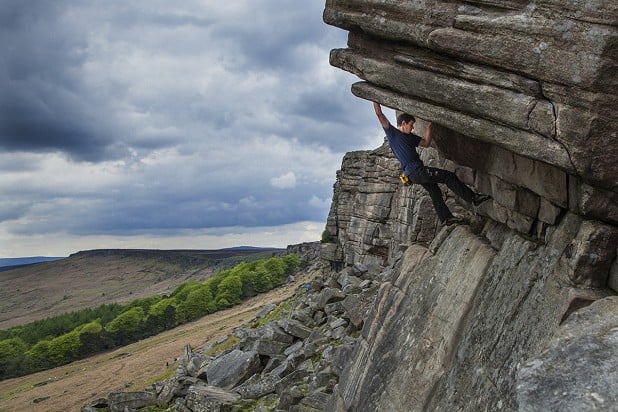

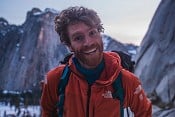
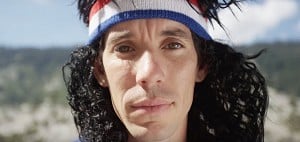

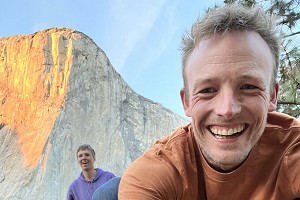
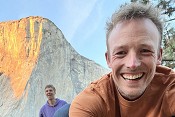









Comments